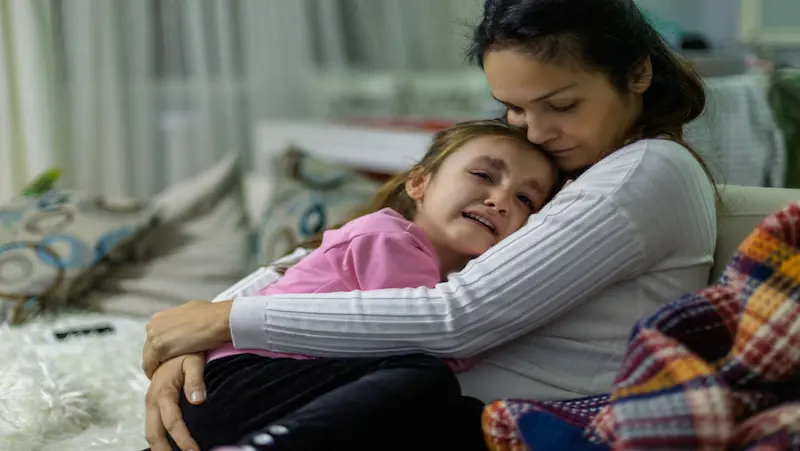Effective child behavior management is a fundamental aspect of parenting and education that plays a pivotal role in shaping a child’s development and well-being. By comprehending the significance of guiding and nurturing positive behaviors, caregivers and educators can lay the foundation for a child’s future success, emotional intelligence, and social interactions.
This understanding empowers us to create supportive environments that foster growth mindset activities for kids, resilience, and a harmonious upbringing for children. In this exploration, we delve into the essential reasons why comprehending child behavior management is crucial for promoting healthy development and building strong foundations for life.
Table of contents
Child Behavior Challenges
As parents, caregivers, and educators, we are all familiar with the myriad of challenges that can arise when dealing with child behavior management. From tantrums to defiance, children often exhibit behaviors that can be puzzling and frustrating.

Identifying Common Behavioral Issues in Children
Tantrums and Meltdowns: One of the most recognizable behaviors in young children, tantrums and meltdowns are often triggered by frustration, inability to communicate effectively, or a desire for autonomy. Identifying the triggers can help address and mitigate these outbursts.
Defiance and Opposition: Many children go through a phase where they challenge authority and exhibit defiant behavior. This can stem from a desire for independence or a need to test boundaries.
Aggression: Whether physical or verbal, aggressive behavior can be alarming. It’s crucial to ascertain whether this behavior is a response to frustration, a learned response from the environment, or even a sign of an underlying issue.
Understanding the Root Causes of Problematic Behavior
Developmental Stages: Many behaviors are a result of the child’s current stage of development. Understanding age-appropriate behaviors can help distinguish between what’s normal and what requires intervention.
Communication Challenges: Young children often lack the vocabulary to express their needs and emotions adequately. This can lead to frustration and manifest as behavioral issues.
Emotional Regulation: Children are still learning to manage their emotions. When they feel overwhelmed, they might resort to tantrums or withdrawal as a coping mechanism.
Communication Strategies
Communication is the cornerstone of human interaction, shaping our relationships and understanding of the world around us. In this blog, we’ll explore two vital communication strategies that facilitate better connections: Active Listening and Effective Communication with Children of Different Ages.

Active Listening: Fostering Open Dialogue
Active listening is more than just hearing words; it’s about giving your full attention and genuinely understanding the speaker’s perspective. By practicing active listening, we create an environment of trust and empathy, paving the way for open dialogues.
Here are some key components of active listening:
Undivided Attention: Give the speaker your complete focus. Put away distractions and maintain eye contact, showing that you value their words.
Empathetic Responses: Respond with empathy to show you comprehend their feelings. Phrases like “I understand how you must feel” or “That sounds challenging” let the speaker know you care.
Clarification: Don’t hesitate to ask questions for clarity. It demonstrates your engagement and helps avoid misunderstandings.
Effective Communication with Children of Different Ages
Interacting with children demands adaptable communication strategies. Children of various ages comprehend and express themselves differently. Tailoring your approach to their developmental stage fosters understanding and cooperation.
Toddlers and Preschoolers (1-4 years): Keep it simple and concrete. Use visual aids, gestures, and short sentences. Encourage them to share feelings through play and drawings.
School-Age Children (5-12 years): Engage in active conversations. Ask open-ended questions to encourage them to express their opinions. Listen attentively and provide explanations for their queries.
Teenagers (13-18 years): Respect their growing independence. Initiate discussions about their interests. Be a patient listener even when they share challenging thoughts, showing that you value their perspective.
Modeling Good Behavior
As parents, caregivers, and adults in a child’s life, we profoundly influence their development. Our actions and behaviors serve as a blueprint for our understanding of the world. This is where the concept of role modeling comes into play. The impact of positive thinking for kids role modeling on child behavior management cannot be overstated.

Role Models Shape Values and Attitudes
Children are like sponges, absorbing information from their environment. When they see adults around them exhibiting kindness, empathy, respect, and responsibility, they are more likely to internalize these qualities.
Learning Through Observation
Children learn primarily by observing and imitating. A child’s first role models are usually their parents or caregivers. They closely watch and mimic everything – from how we communicate and solve problems to how we handle stress and conflict resolution skills for kids.
Building Healthy Relationships
Children exposed to positive role models often develop better social leadership skills and relationship-building abilities. They learn the value of effective communication, cooperation, and understanding in fostering healthy connections.
Being a Positive Role Model
Being a positive role model doesn’t mean being perfect; rather, it’s about demonstrating a genuine effort to display the qualities you want your child to adopt. Here are a few tips to consider:
Practice What You Preach: Align your words and actions. Children are quick to notice inconsistencies.
Open Communication: Talk to your child about the behavior you’re modeling. Explain why certain steps are important and the impact they can have.
Show Empathy: Let your child see you practicing empathy and understanding in various situations.
Understanding the Triggers of Tantrums
Tantrums often arise from a child’s inability to express their emotions or communicate their needs effectively. Common triggers include fatigue, hunger, frustration, and a desire for autonomy. Identifying these triggers is the first step in managing tantrum situations.

1. Stay Attuned: Pay close attention to your child’s cues. Are they tired, hungry, or overstimulated? Understanding their physical and emotional state can help you predict and prevent tantrums.
2. Communicate: Encourage your child to use words to express their feelings. If they lack the vocabulary, help them label their emotions. This teaches them healthier ways of communication.
Calming Techniques for Managing Tantrum Situations
When faced with a tantrum, it’s important to respond calmly and patiently. Here are some techniques to help diffuse the situation:
1. Stay Calm: Your child looks to you for guidance. If you remain calm, your child is more likely to follow suit.
2. Offer Choices: Providing limited choices can give your child a sense of control. For instance, ask if they’d like to wear the red shirt or the blue one.
3. Distraction: Redirect your child’s attention to something else. A change of scenery or a new activity can often shift their focus away from the trigger.
4. Time-In: Sometimes, children need a quiet space to calm down. Create a designated area where they can retreat until they’re ready to talk.
The Role of Emotions in Behavior
Emotions are the colorful threads that weave the intricate fabric of human behavior. From the gentle touch of empathy to the fierce flames of anger, our emotions drive our actions, decisions, and interactions.

The Role of Emotions in Behavior
Emotions are more than fleeting sensations; they shape our perceptions, guide our choices, and impact our relationships. The connection between emotions and behavior is undeniable. Happiness can inspire acts of kindness, while frustration might lead to outbursts.
Teaching Emotional Intelligence to Children
Cultivating emotional intelligence is a gift that keeps on giving. By imparting the understanding that emotions are natural and valuable, children can learn to navigate the labyrinth of feelings with finesse. Empathy, self-awareness, and effective communication are the building blocks of emotional intelligence.
Helping Children Express and Manage Their Emotions
Open Dialogue: Create a safe space for children to express their emotions without fear of judgment. Engage in open conversations that validate their feelings, helping them develop a vocabulary to articulate their experiences.
Emotion Identification: Teach children to identify and label their emotions accurately. Visual aids like emotion charts or storytelling can make this process engaging and relatable.
Breathing Techniques and Mindfulness: Equip children with simple breathing exercises and mindfulness meditation for kids techniques to manage overwhelming emotions. These tools empower them to pause, reflect, and respond thoughtfully rather than react impulsively.
Strategies for Addressing Special Needs
In any educational or social setting, fostering an inclusive environment that caters to the diverse needs of all children is essential. Children with special needs require extra attention and tailored strategies to ensure their growth mindset videos for kids and success.

1. Individualized Approach: Recognize that each child is unique. Take the time to understand the specific needs, strengths, and challenges of children with special needs. Collaborate with parents, caregivers, and specialists to create individualized education plans (IEPs) that address the child’s specific requirements and goals.
2. Clear Communication: Communication is the key to successful interaction. Use clear and concise language, visual aids, or communication boards to facilitate understanding. For non-verbal children, encourage the use of alternative communication methods such as sign language or assistive communication devices.
3. Sensory Considerations: Children with special needs often have sensory sensitivities. Create a sensory-friendly environment by minimizing loud noises, providing sensory breaks, and offering calming sensory tools like fidget toys or weighted blankets.
4. Inclusive Activities: Design activities that cater to a variety of abilities. Modify tasks to match each child’s skill level, ensuring that everyone can participate and contribute. Encourage peer interaction through cooperative activities that promote teamwork.
Conclusion
In conclusion, mastering child behavior management is essential for parents and caregivers to create a nurturing and supportive environment. By implementing effective strategies, such as clear communication, positive reinforcement, and setting appropriate boundaries, adults can guide children toward healthy development and well-being. Remember, consistent efforts in understanding and addressing behaviors can lead to stronger relationships and positive outcomes for both children and caregivers alike.
Also, BrightChamps provides a comprehensive platform for learning about money for kids, offering interactive and engaging resources that teach financial literacy, budgeting, saving, and other essential money management skills.
Frequently Asked Questions
A1. Address the behavior calmly, set clear boundaries, teach coping skills, and seek professional help if needed.
A2. Yes, consistent and positive discipline helps teach appropriate behavior and social skills.
A3. Spend quality time together, listen actively, show empathy, and engage in activities your child enjoys.
A4. Yes, excessive screen time can affect behavior. Monitor content, set limits, and encourage balanced tech use.
A5. Encourage problem-solving, teach emotional regulation, emphasize positive thinking, and provide a supportive environment.


 We are an army of educators and passionate learners from BrightChamps family, committed to providing free learning resources to kids, parents & students.
We are an army of educators and passionate learners from BrightChamps family, committed to providing free learning resources to kids, parents & students.













